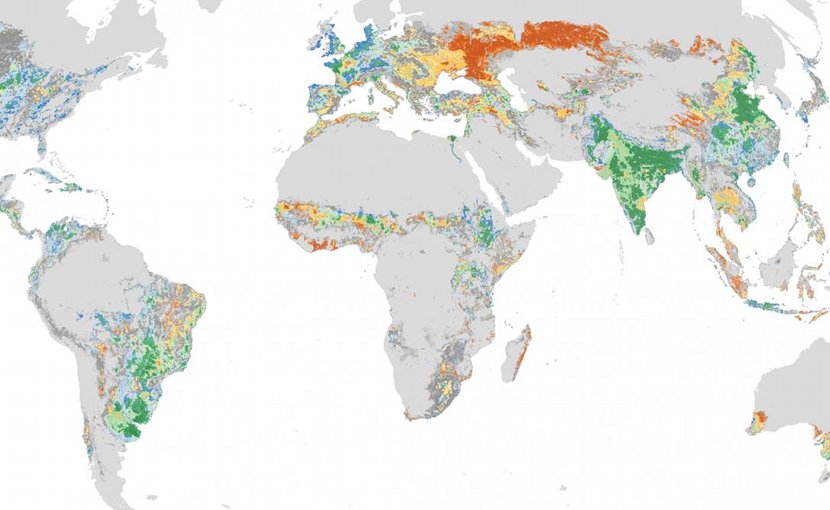Why Researchers Are Mapping The World’s Manure
Farmers rely on phosphorus fertilizers to enrich the soil and ensure bountiful harvests, but the world’s recoverable reserves of phosphate rocks, from which such fertilizers are produced, are finite and unevenly distributed.
Stevens Institute of Technology is spearheading an international effort to map the global flow of phosphorus, much of which will be absorbed by crops, then eaten and excreted as waste by animals and people – and jump-start efforts to recapture and recycle the vital nutrient.
In the April 2019 issue of Earth’s Future, David Vaccari, director of the Stevens Institute’s department of civil, environmental and ocean engineering, and his team map that process globally for the first time, and identify regional “hot spots” where there’s both significant demand for fertilizers, and significant potential for recapturing phosphorus from animal and human waste.
“Ideally, the 45 million metric tons of phosphorus fertilizers each year would be completely reused, and we’d harvest their maximum potential to support food production,” said Vaccari. “This work is a step towards understanding how to get to that point.”
Vaccari’s team, including researchers from China, Australia, Canada, Sweden, and Netherlands, combined recently developed datasets to map global crop production alongside human and livestock population levels. They then divided the planet into a grid of 10-kilometer wide blocks, allowing detailed local insights with an unprecedented overview of global phosphorus flows that bridges the global to the local, actionable level. “In a field where a lack of well-integrated data has often impeded both local and regional planning, this global map is a key breakthrough,” said Vaccari.
The team show there are significant untapped opportunities for recycling phosphorus. Some 72 percent of croplands with significant manure production nearby, and 68 percent of croplands with significant human populations nearby, are in regions that are heavily dependent on imported phosphorus, including large swathes of major emerging economies such as India and Brazil.
The study also identifies significant surpluses of phosphorus-rich waste in much of Asia, Europe, and the United States, suggesting that both developing and developed economies could benefit from increased recycling.
“If we want to get serious about phosphorus recycling, these are the places where we’re going to get the most bang for our buck,” said Vaccari.
The results also show that at least five times as much phosphorus is contained in animal manure as human waste, suggesting that livestock operations are an abundant target for recycling efforts. Almost half of the world’s farmlands – about 12 percent of the planet’s landmass – are co-located with manure-rich livestock operations, suggesting that in many regions manure could be applied to fields directly, or processed using bio-digesters to extract phosphorus for efficient and economical transport to farms.
First-author Steve Powers, a researcher at Washington State University who conceived of the study, is now trying to figure out exactly how much phosphorus can be recaptured from animal and human waste, and identify other opportunities for more efficient phosphorus use. “If we can recycle more of this locally-available waste phosphorus back into agriculture, we might be able to keep it away from leak points while reducing our dependence on future fertilizer imports and mining,” said Powers.
###
Disclaimer: AAAS and EurekAlert! are not responsible for the accuracy of news releases posted to EurekAlert! by contributing institutions or for the use of any information through the EurekAlert system.

